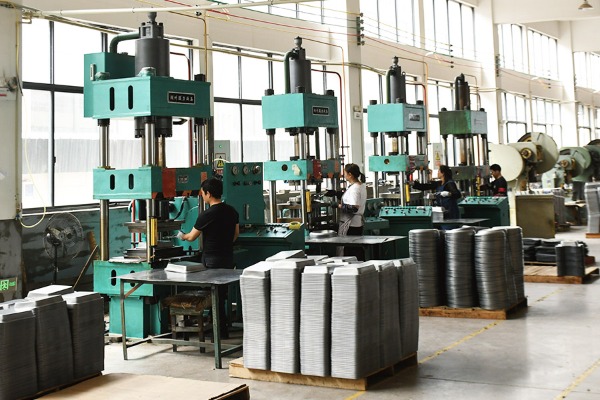Wholesale stainless steel muffin pan Price
When it comes to baking, choosing the right muffin pan can significantly impact the quality of your baked goods. Among the various options available, the stainless steel muffin pan and the aluminum muffin pan are two popular choices. Each has its unique advantages and disadvantages, making it helpful to understand their differences to determine which is more suitable for home baking.
The stainless steel muffin pan is known for its durability and resistance to rust and corrosion. Unlike aluminum, which can react with acidic ingredients, stainless steel muffin pans are non-reactive. This means that they will not alter the flavor of your muffins, ensuring that your baked goods taste exactly as intended. Additionally, the stainless steel muffin pan is less likely to warp over time, maintaining its shape and functionality even after repeated use.
One of the significant benefits of using a stainless steel one is its ability to withstand high temperatures. This feature is particularly advantageous for recipes that require baking at elevated temperatures. The stainless steel muffin pan can handle heat without compromising its integrity, making it a reliable choice for various baking tasks. Furthermore, the non-porous surface of the stainless steel muffin pan makes it easy to clean, as batter and residue do not cling to the surface as they might with other materials.
In contrast, aluminum muffin pans are often favored for their heat conductivity. They heat up quickly and distribute heat evenly, which can cause more consistent baking results. However, this advantage can also be a double-edged sword. The rapid heating of aluminum can sometimes cause muffins to brown too quickly on the outside while remaining undercooked on the inside. This issue can be particularly frustrating for home bakers who strive for perfectly baked muffins.
Another consideration is the weight of the pans. Stainless steel muffin pans tend to be heavier than their aluminum counterparts. While this added weight can contribute to stability during baking, it may also make handling the pan more cumbersome, especially when filled with batter. On the other hand, aluminum pans are lightweight and easy to maneuver, which can be a significant advantage when transferring them in and out of the oven.
When it comes to longevity, the stainless steel one typically outlasts aluminum pans. While aluminum can become scratched or dented over time, causing potential issues with food release and uneven baking, a well-maintained stainless steel muffin pan can last for years without showing signs of wear. This durability makes it a worthwhile choice for avid bakers who frequently use muffin pans.
In terms of price, aluminum muffin pans are generally more affordable than stainless steel muffin pans. This lower cost can be appealing for those just starting their baking journey or for those who bake infrequently. However, investing in a high-quality stainless steel muffin pan can pay off in the long run, as it will likely require fewer replacements and provide better baking results.
Ultimately, the choice between two muffin pans comes down to personal preference and baking habits. If you prioritize durability, non-reactivity, and ease of cleaning, the stainless steel muffin pan is an ideal choice. However, if you are looking for quick heat conduction and lighter weight, an aluminum muffin pan may be more suitable.
Both the stainless steel muffin pan and aluminum muffin pans have their merits. For home bakers who value quality and consistent results, stainless steel baking tools are a better choice. Its ability to withstand high temperatures, non-reactive nature, and ease of maintenance make it a reliable tool in any kitchen. Whether you are baking classic blueberry muffins or experimenting with new recipes, a stainless steel muffin pan can enhance your baking experience and cause delicious results.

 English
English 中文简体
中文简体 Deutsch
Deutsch
